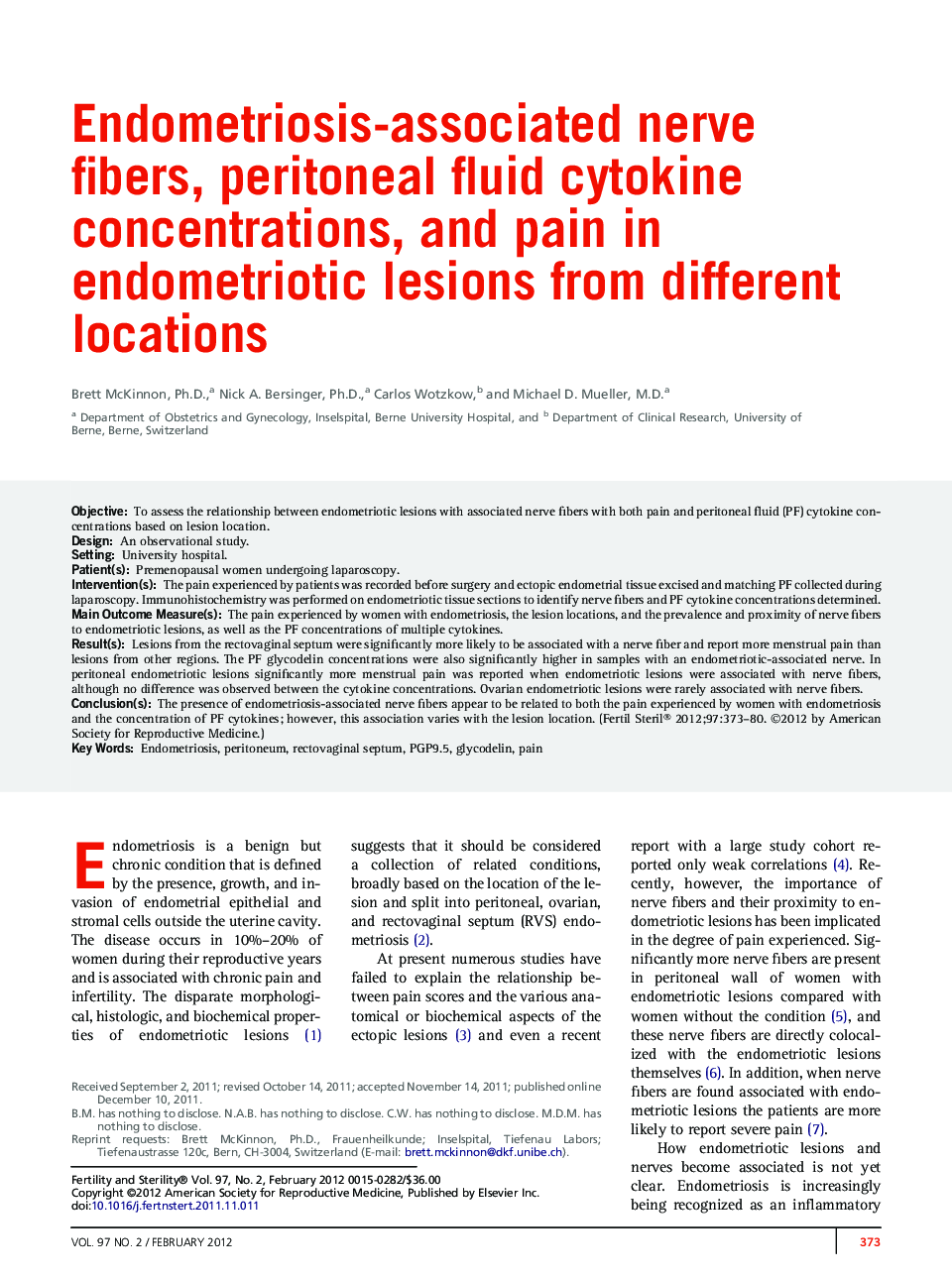| Article ID | Journal | Published Year | Pages | File Type |
|---|---|---|---|---|
| 3939150 | Fertility and Sterility | 2012 | 8 Pages |
ObjectiveTo assess the relationship between endometriotic lesions with associated nerve fibers with both pain and peritoneal fluid (PF) cytokine concentrations based on lesion location.DesignAn observational study.SettingUniversity hospital.Patient(s)Premenopausal women undergoing laparoscopy.Intervention(s)The pain experienced by patients was recorded before surgery and ectopic endometrial tissue excised and matching PF collected during laparoscopy. Immunohistochemistry was performed on endometriotic tissue sections to identify nerve fibers and PF cytokine concentrations determined.Main Outcome Measure(s)The pain experienced by women with endometriosis, the lesion locations, and the prevalence and proximity of nerve fibers to endometriotic lesions, as well as the PF concentrations of multiple cytokines.Result(s)Lesions from the rectovaginal septum were significantly more likely to be associated with a nerve fiber and report more menstrual pain than lesions from other regions. The PF glycodelin concentrations were also significantly higher in samples with an endometriotic-associated nerve. In peritoneal endometriotic lesions significantly more menstrual pain was reported when endometriotic lesions were associated with nerve fibers, although no difference was observed between the cytokine concentrations. Ovarian endometriotic lesions were rarely associated with nerve fibers.Conclusion(s)The presence of endometriosis-associated nerve fibers appear to be related to both the pain experienced by women with endometriosis and the concentration of PF cytokines; however, this association varies with the lesion location.
